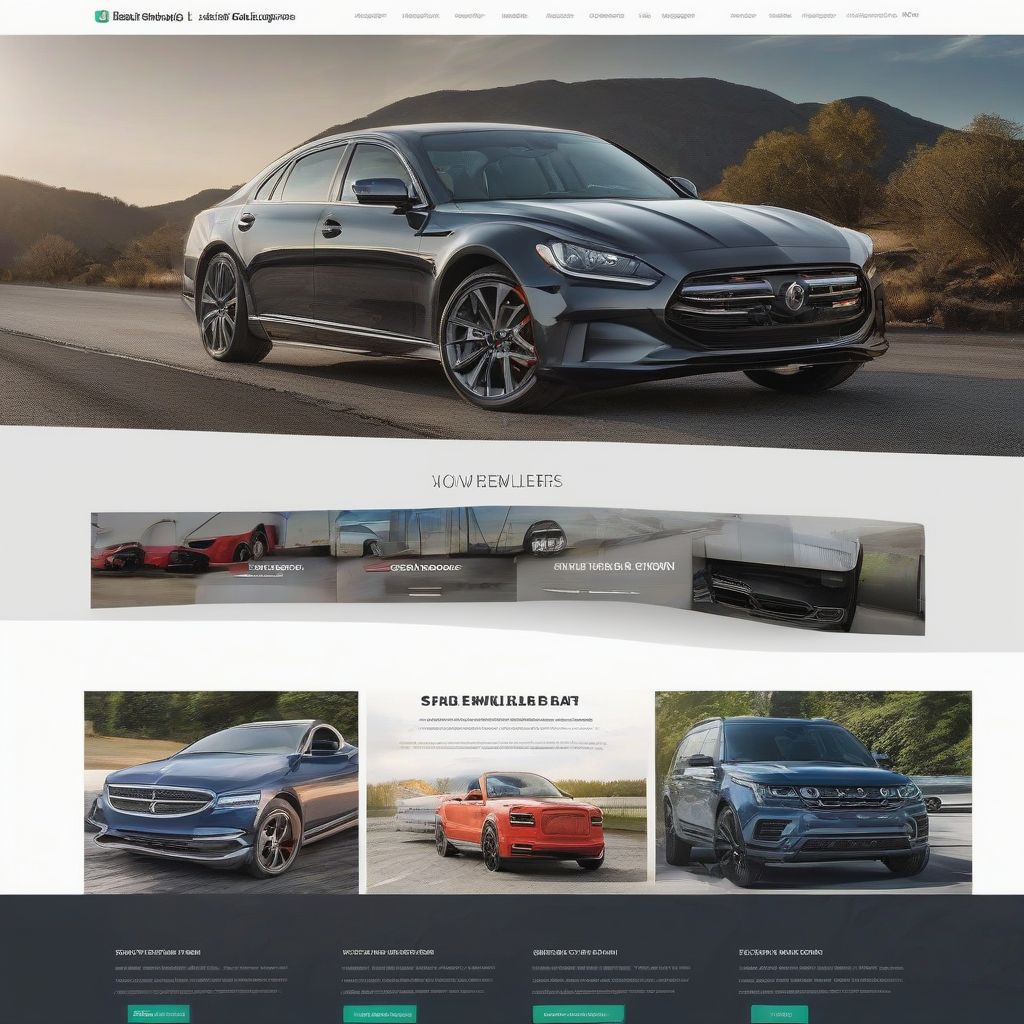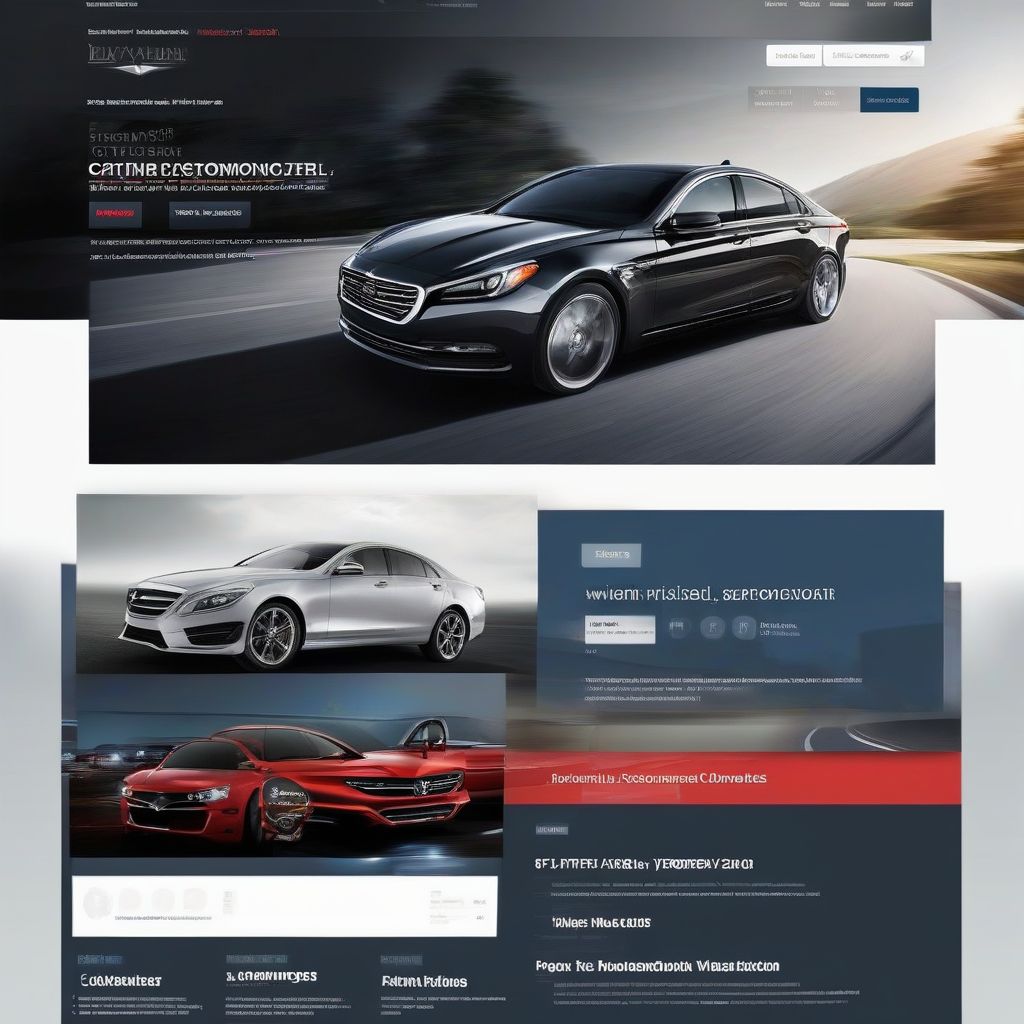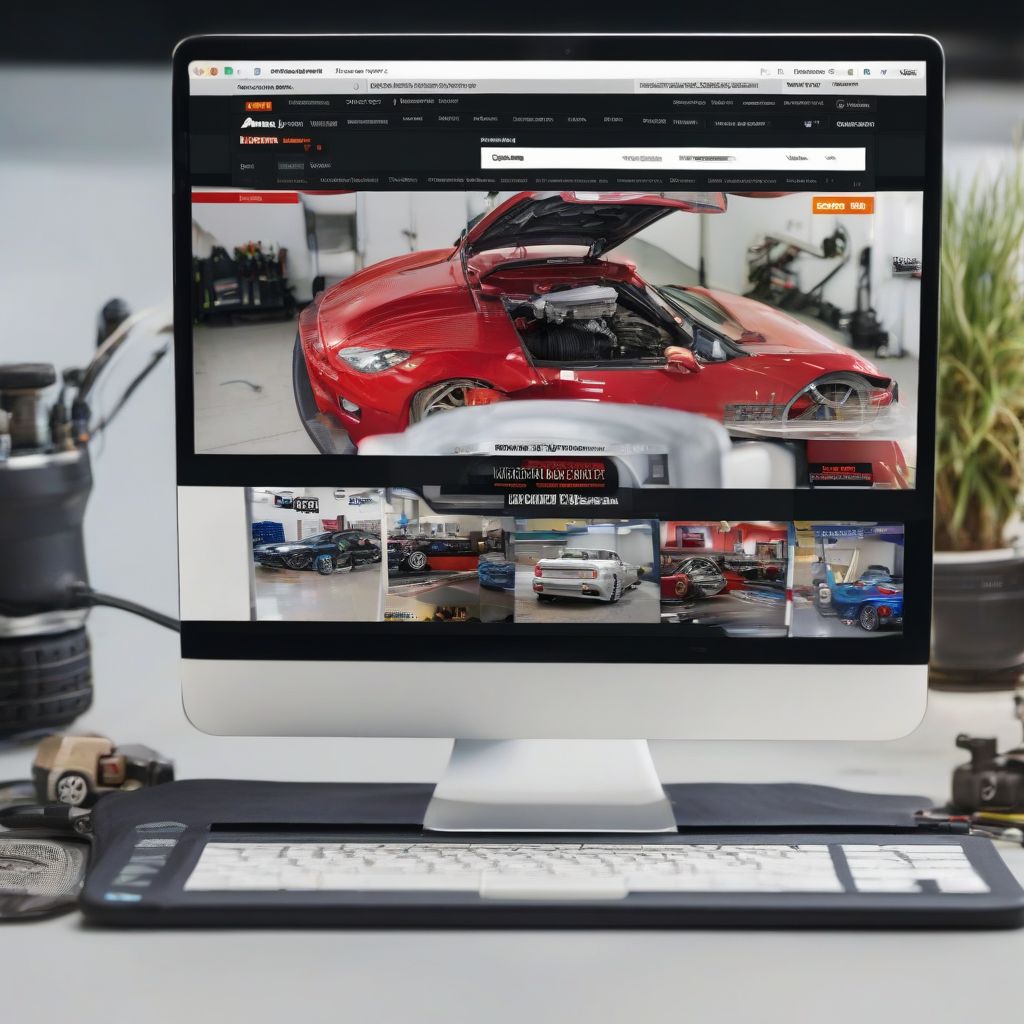In today’s digital age, a strong online presence is non-negotiable for any business, and the automotive industry is no exception. Potential customers are increasingly turning to the web to research vehicles, compare prices, and find dealerships. This makes a compelling and effective Automotive Website Design not just an asset, but a necessity. It’s the digital showroom, the 24/7 salesperson, and the key to unlocking success in a competitive market.
Understanding the Power of Automotive Website Design
Automotive website design is much more than just aesthetics. It’s about crafting an online experience that is user-friendly, informative, and tailored specifically to the needs of car buyers. A well-designed website builds trust, showcases inventory, and ultimately drives conversions. Here’s why it’s paramount:
- First Impressions Matter: Your website is often the first point of contact for potential customers. A sleek, professional design immediately establishes credibility and instills confidence.
- Enhanced User Experience: Easy navigation, detailed vehicle information, high-quality images, and intuitive search functions create a seamless and enjoyable browsing experience, encouraging users to stay longer and explore further.
- Increased Visibility & Reach: A well-optimized website with a focus on SEO (Search Engine Optimization) ensures that your dealership ranks higher in search engine results, making you more visible to those actively searching for vehicles in your area.
- Lead Generation & Conversions: Clear calls-to-action, contact forms, and online scheduling options streamline the process for potential leads, guiding them towards making a purchase or booking a service.
 Modern Car Dealership Website Homepage
Modern Car Dealership Website Homepage
Key Elements of Effective Automotive Website Design
Creating a website that resonates with car buyers and delivers results requires careful attention to key elements:
1. Responsive Design for All Devices
With mobile devices accounting for a significant portion of internet traffic, a responsive design is no longer optional – it’s essential. Your website should seamlessly adapt to different screen sizes, ensuring a consistent and user-friendly experience on desktops, laptops, tablets, and smartphones.
2. Compelling Visual Storytelling
High-quality images and videos are crucial in the automotive industry. Showcase your inventory with stunning visuals that highlight the features and allure of each vehicle. Consider incorporating 360-degree views, virtual tours, and detailed image galleries to provide an immersive experience.
3. User-Friendly Navigation & Search
Make it effortless for visitors to find what they are looking for. Intuitive navigation menus, clear categories, and a powerful search bar with filters (make, model, year, price range) empower users to quickly locate vehicles that match their preferences.
4. Detailed Vehicle Listings
Provide comprehensive information for each vehicle in your inventory. This includes multiple high-quality images, specifications, features, pricing details, financing options, and a clear call-to-action for inquiries or test drives.
5. SEO Optimization
Attract organic traffic and reach a wider audience by incorporating relevant keywords throughout your website content, optimizing meta descriptions, and building high-quality backlinks.
6. Integration with Third-Party Platforms
Integrate your website with CRM systems, inventory management tools, and other relevant platforms to streamline operations, manage leads effectively, and provide accurate, up-to-date information to your customers.
7. Focus on Conversion Optimization
Drive conversions by strategically placing call-to-action buttons, offering online financing pre-qualification, and simplifying the process for scheduling service appointments or requesting quotes.
Frequently Asked Questions about Automotive Website Design
1. How much does it cost to build an automotive website?
The cost of an automotive website can vary significantly depending on factors like the complexity of the design, functionality, number of pages, and whether you choose a template-based solution or a custom-built site. It’s best to request quotes from reputable web design agencies specializing in the automotive industry to get an accurate estimate based on your specific needs.
2. What is the best platform for an automotive website?
Popular platforms for automotive websites include WordPress, Wix, and Squarespace. WordPress offers flexibility and customization options, while Wix and Squarespace provide user-friendly drag-and-drop interfaces. The best platform for you will depend on your technical expertise, budget, and desired level of control over the design and functionality of your website.
3. How important is SEO for my automotive website?
SEO is crucial for driving organic traffic to your website. By optimizing your website content and technical elements for relevant keywords, you can improve your search engine rankings, making it easier for potential customers to find your dealership online.
4. How can I track the success of my automotive website?
Website analytics tools like Google Analytics provide valuable insights into your website’s performance. You can track key metrics such as traffic sources, user behavior, conversion rates, and popular pages to measure the effectiveness of your website and identify areas for improvement.
Investing in Success: The Importance of Ongoing Optimization
Building a successful automotive website is an ongoing process. The digital landscape is constantly evolving, and it’s essential to stay ahead of the curve. Regularly updating your website content, optimizing for new keywords, and adapting to changing user behavior patterns are vital for maintaining a competitive edge. By embracing a data-driven approach and continually refining your website, you can ensure that it remains a powerful tool for attracting customers, driving sales, and achieving long-term success in the dynamic automotive industry.



